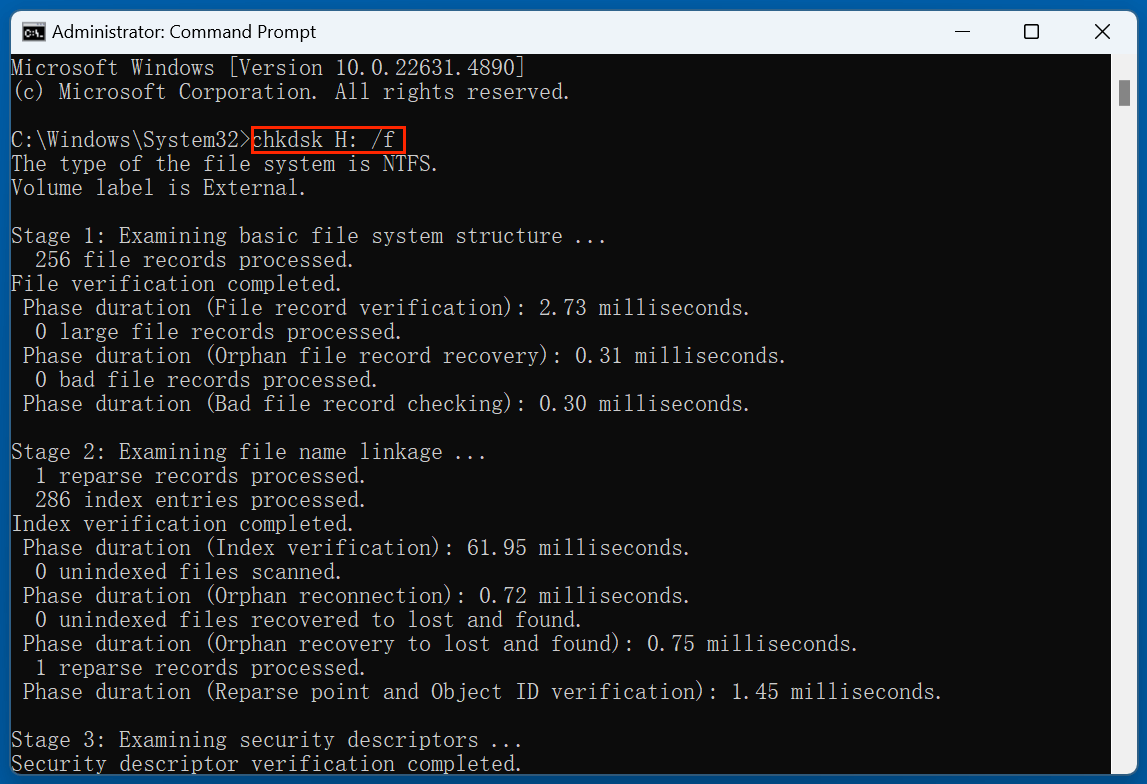Before we start: Delete a audio file by mistake? Lose all music files from your SD card? Don't worry. Donemax Data Recovery is a powerful data recovery program. It can easily and completely recover deleted, formatted or even inaccessible files from an SD card.
PAGE CONTENT:
Music and audio files are more than just entertainment - they can be cherished memories, carefully curated playlists, or vital recordings for work and creative projects. But when you suddenly find that your audio files are missing from your SD card, panic can set in quickly. Fortunately, all is not lost. Whether you deleted files accidentally, formatted the card, or encountered corruption, there are several effective methods to recover your music or audio files from an SD card.
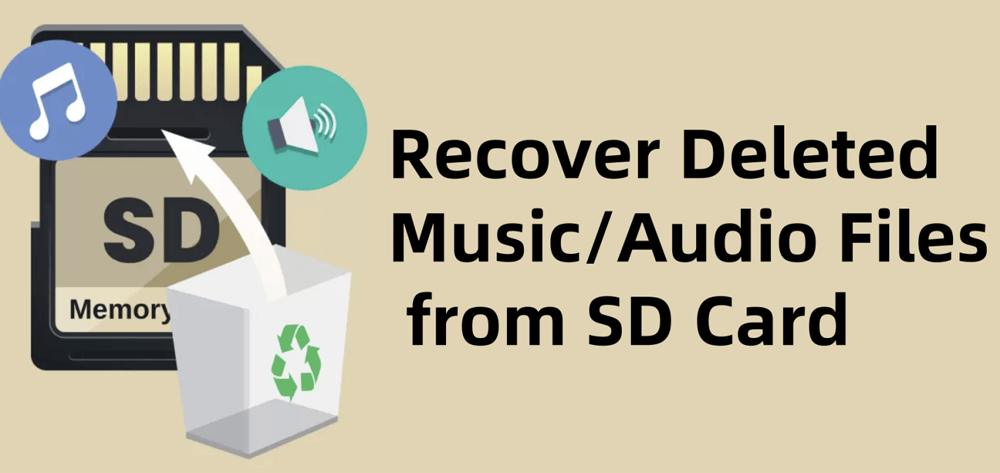
This guide walks you through why music files go missing, how to prevent further damage, and the best tools and techniques to recover your valuable data.
Common Reasons for Music or Audio File Loss on an SD Card
Before we jump into recovery solutions, it's essential to understand how data loss happens. Here are the most common causes of missing music or audio files on SD cards:
1. Accidental Deletion
You might accidentally delete a folder or file while organizing your music or audio collection. Deleted files often don't go to the Recycle Bin when removed from an SD card.
2. Formatting the SD Card
Formatting wipes out all data from the card. This can happen if you click "Format" by mistake or if the device prompts you to format the card due to an error.
3. SD Card Corruption
Corruption can result from removing the SD card improperly, file system issues, or malware. A corrupted card may become unreadable or display empty folders.
4. Virus or Malware Attacks
Infected devices can corrupt or delete your audio files, or hide them from view.
5. File System Errors
Your computer or device may not recognize the SD card if the file system is corrupted (e.g., RAW format, unrecognized partitions).
6. Physical Damage
Dropping, bending, or water exposure can damage the SD card and make data access difficult without professional help.
Precautions Before Attempting Recovery:
To increase the chances of successful recovery, follow these precautions immediately after noticing the loss:
- Stop using the SD card. Don't copy, delete, or add any files. This prevents overwriting lost data.
- Avoid formatting the card again. If prompted to format, choose "Cancel."
- Remove the SD card safely. Use "Safely Remove Hardware" when unplugging the card from a PC.
- Don't run unreliable apps. Avoid using random apps or unverified fixes that could damage your files further.
👍Best 4 Methods to Recover Deleted or Lost Music and Audio Files from an SD Card
Method 1: Recover Music/Audio Files from Your SD Card Using Data Recovery Software
This is the most effective method when your SD card is still readable by a computer but the files are missing or deleted.
Donemax Data Recovery is one of the best data recovery software. It supports to recover 2000+ file formats including MP3, MP4, WMV, WMA, AIFF, FLAC, AAC, OGG, etc. It can securely and completely recover deleted or lost audio files and music files from the SD card.
Follow the steps below to recover lost audio/music files from your SD card:
Step 1. Download the Mac or Windows version of Donemax Data Recovery on your computer and connect the SD card to the same computer.
Step 2. Open Donemax Data Recovery, then select the SD card from the drive list.
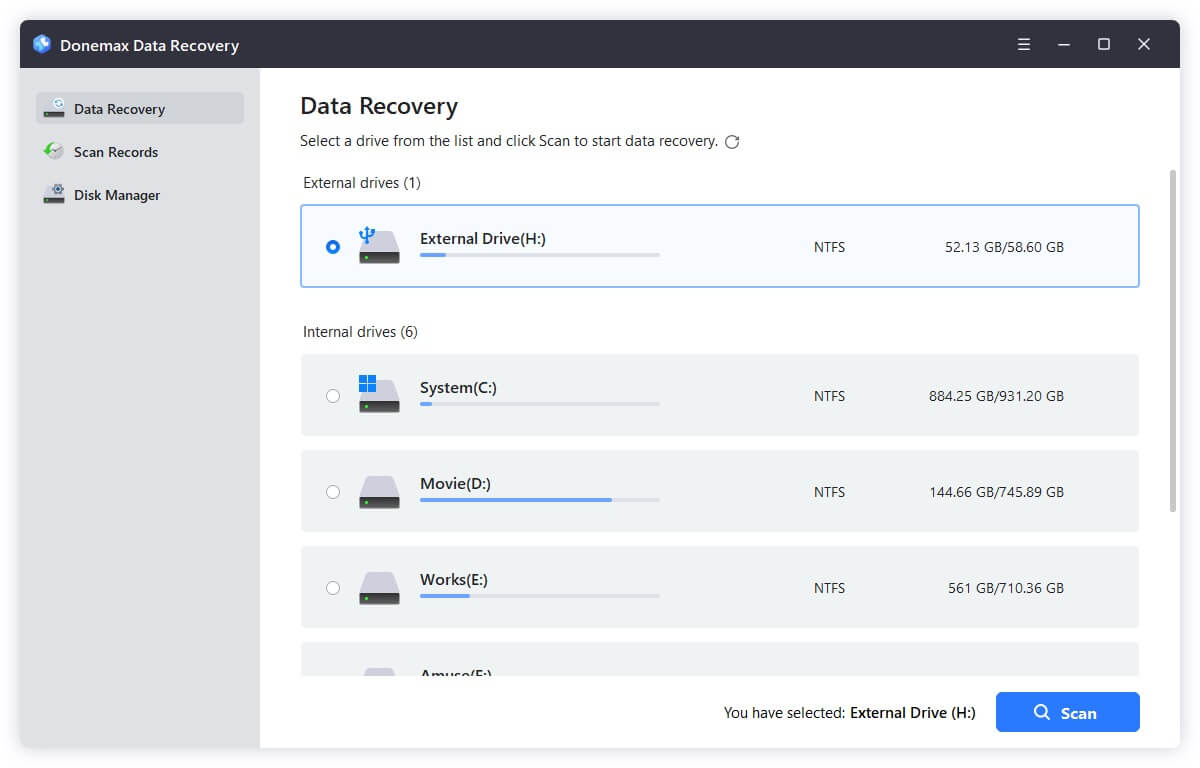
Step 3. Click "Scan." The software performs a quick scan followed by a deep scan to find hidden or deleted files. You can pause and filter results during the scan.
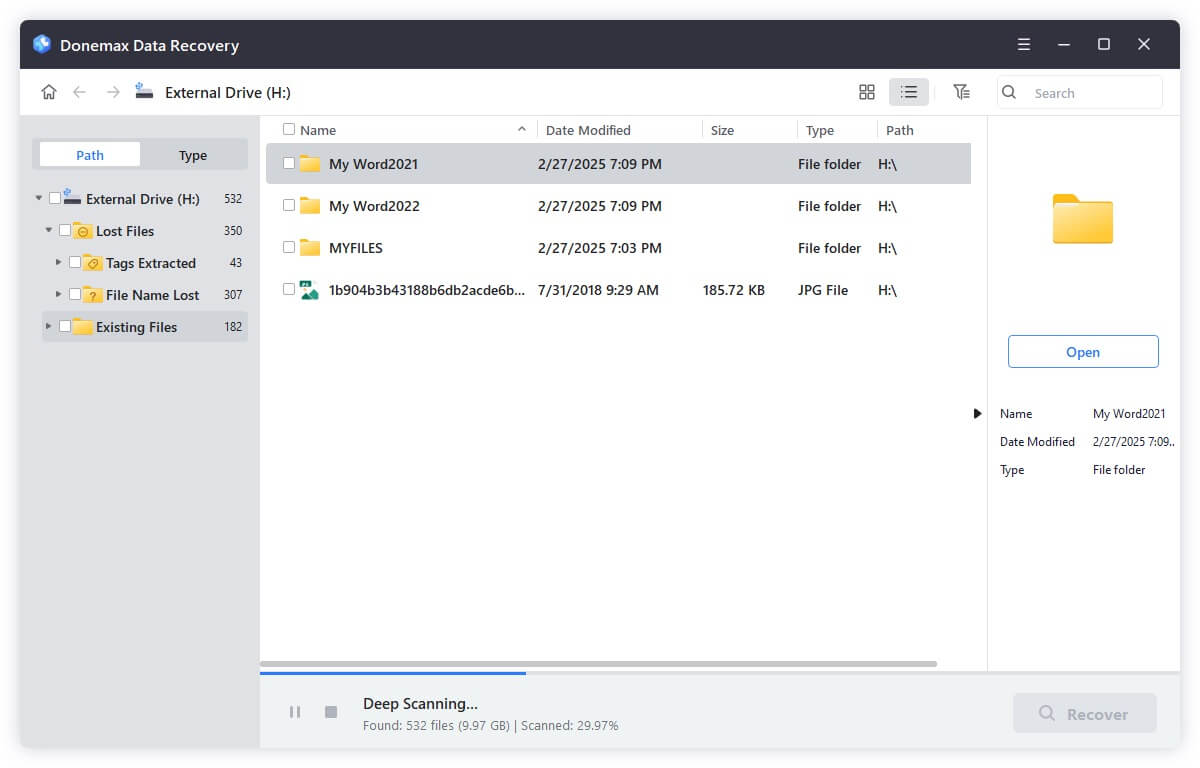
Step 4. After scanning, Donemax Data Recovery will list all recoverable files by Path and Type. You can easily find the deleted/lost audio/music files. Then select the wanted files, click on Recover button to save them.
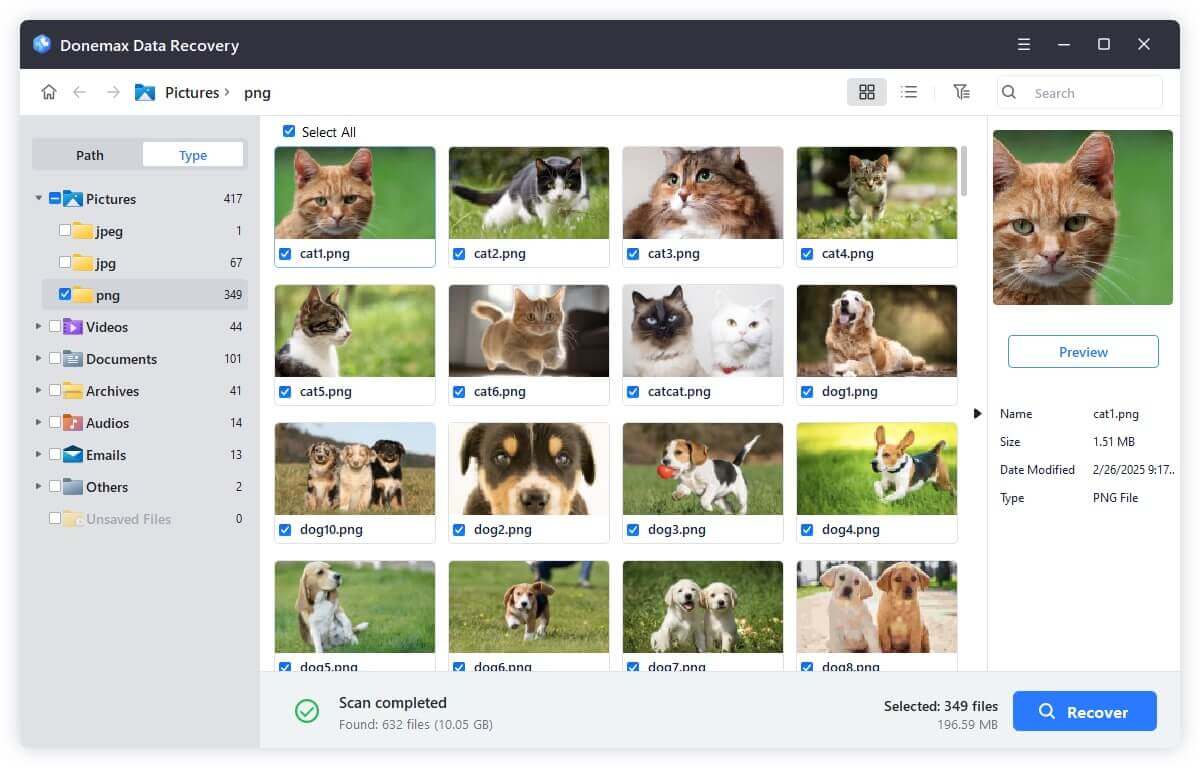
Advanced Tips for Successful Recovery:
- Enable deep scan mode if files don't show up in the quick scan.
- Check "Lost Partitions" section if your SD card previously had a partition table.
- Sort by file size or modified date to find high-quality audio files or recordings.
- Recover multiple versions of the same file (software may recover previous versions).
What If Files Are Corrupted After Recovery?
In some cases, recovered audio files may not play properly due to partial overwriting or corruption. Here are a few ways to handle that:
- Try VLC Media Player - It can open slightly corrupted audio files better than default players.
- Use audio repair tools like Audacity, MP3 Repair Tool, or Stellar Audio Repair.
- Reconvert the file format using an audio converter to rebuild the file structure (e.g., MP3 to WAV and back).
Limitations of Recovery Software:
While these tools are highly effective, they cannot:
- Recover files if the data has been fully overwritten.
- Fix severe physical damage to the memory chip.
- Work on write-protected or encrypted SD cards without disabling protection first.
For physical or hardware-level recovery, you'll need to escalate to a professional service (see Method 4).
Method 2: Recover from Backup (If you have a backup)
If you back up your music or recordings to the cloud or another device, you can restore the lost files quickly.
1. Cloud Services
- Google Drive
- Dropbox
- iCloud
- OneDrive
Log into your cloud storage account and look for music or audio folders.
2. Music Libraries
If you use media software like iTunes or Windows Media Player, your music might be backed up locally.
3. Audio Projects
If you're a podcaster or musician, check whether you saved your project files (.wav, .aiff, .mp3) in software like Audacity, FL Studio, or GarageBand.
Method 3: Use Command Prompt (Windows Only)
Sometimes, files aren't deleted but are hidden due to file system errors or malware. The Command Prompt can reveal hidden music files or fix directory issues.
1. Use CHKDSK to Fix File System Errors
- Press Win + R, type cmd, and press Enter.
- Type the following command:
chkdsk X: /f
![Use Command Prompt (Windows Only)]()
(Replace X with your SD card drive letter)
This command attempts to fix file system errors and restore file access.
2. Use ATTRIB to Recover Hidden Files
Sometimes, malware marks files as hidden. Use this command:
attrib -h -r -s /s /d X:\*.*

This will remove hidden, read-only, and system attributes from files and folders.
Note: These methods don't restore permanently deleted files, but they are worth trying before using recovery software.
Method 4: Contact a Professional Data Recovery Service
If your SD card is physically damaged or undetectable, a professional data recovery lab is your best option.
When to Use This Option:
- The card isn't recognized at all.
- You hear unusual sounds from the card reader.
- Data recovery software cannot detect or scan the card.
What to Expect:
- Services: Physical chip-off recovery, logical analysis
- Cost: Ranges from $100 to $1000+, depending on damage
- Time: Typically 3–10 business days
- Success Rate: Usually high if no internal chip damage
Recommended Providers:
- DriveSavers
- Secure Data Recovery
- Ontrack
- Gillware
Always request a free quote or evaluation before agreeing to the service.
Tips to Avoid Future Music or Audio File Loss
Data loss can be frustrating and time-consuming to fix. Use these preventive tips to protect your music and audio files:
1. Backup Regularly
- Use external drives or cloud services.
- Schedule automated backups for audio projects or music libraries.
2. Use Quality SD Cards
- Choose high-endurance SD cards from brands like SanDisk, Samsung, or Kingston.
- Avoid counterfeit or unbranded cards.
3. Eject Safely
- Always use the "Safely Remove" option before unplugging the card.
4. Avoid Overfilling the Card
- Leave at least 10-15% free space to reduce write errors and corruption.
5. Protect from Malware
- Scan your SD card regularly with antivirus software.
- Avoid connecting to untrusted computers.
6. Use Reliable Devices
- Avoid using damaged, outdated, or incompatible card readers or smartphones.
Note: If you want to permanently destroy some audio/music or voice files from an SD card, ensure they are not recoverable, you can try data erasure software - such as Donemax Data Eraser. It will securely and permanently erase the selected files/folders from your SD card.
Conclusion
Losing music or audio files from an SD card doesn't have to be the end of the road. By acting quickly and choosing the right recovery method - whether it's powerful software, a backup restore, or professional services - you can often recover your files with little to no data loss.
If your SD card is still readable, data recovery software is your best first step. For more serious cases, like physical damage or unrecognized cards, a professional recovery service can step in.
Most importantly, avoid future loss by backing up regularly, using reliable SD cards, and handling your devices with care. With the right tools and knowledge, you can ensure your music and audio files stay safe and sound.


Donemax Data Recovery
Donemax Data Recovery is one of the best data recovery software. It is easy-to-use and can help in recovering deleted, formatted, inaccessible or lost data from HDD/SSD, external disk, USB drive, SD card, camera or other storage devices.
Related Articles
- Apr 10, 2025[4 Methods] Recover Lost Data from Lenovo Laptop: A Comprehensive Guide
- Jul 01, 2024How to Recover Lost Data from Samsung Laptop?
- May 28, 2025Recover ANI File: Complete Guide to Restore Animated Cursor Files
- Apr 01, 2025Data Recovery from Damaged SD Card: A Comprehensive Guide
- May 29, 2025Recover Deleted AEP File: Complete Guide to Restore Your Adobe After Effects Projects
- Jun 30, 2025How to Recover Deleted or Lost MOV Videos?

Coco Lin
Coco has been a writer and a chief programmer at Donemax software since 2018. Over 10 years of experience of writing troubleshooting articles in the software industry, she is passionate about programming and loves to providing solutions to Windows and Mac users. Also she enjoys music and palying tennis in her free time.

Gerhard Chou
In order to effectively solve the problems for our customers, every article and troubleshooting solution published on our website has been strictly tested and practiced. Our editors love researching and using computers and testing software, and are willing to help computer users with their problems

